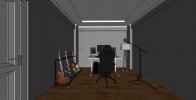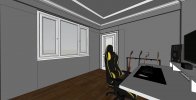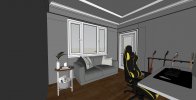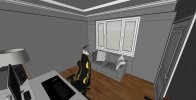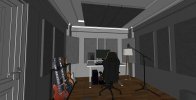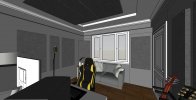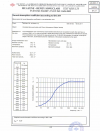HashimAlhashimi
Member
- Joined
- May 6, 2024
- Messages
- 8
- Likes
- 5
Hello all, Im new to the forum here.
Im about to diy acoustic panels for my room for recording Classical,Acoustic and electric guitar. And also to listen with monitors.
Now im quiet confused with the Density and as i read alot i cant reach to the right answer.
I have option of 70,90,120,150 Kg/m3 the market is full of 150 and 120 kg/m3 with 5cm and 10cm
and also i got option of Knauf insulation Mineral Plus IPB 039 but i cant get the density of it with the company as they dont know the only says the Alpha number is 0.8 to 1. and the packet of it comes around 8.3 KG with 16 Peaces 60x120cmx5cm. and 8 Peace with 10cm thickness. So i assume the Density here is Low according to the full packet weight.
I do think to go with the Knauf mineralwool 10 Cm thick but i dont know the density of it and its also affordable, but at the same time if rockwool with 70 or higher density will give me better result i would go for it. So confused.
Also im planing to put panels as Bass traps. Any suggestion about that ?
another option i thought to be clear. For walls and celling i thought of 70 KG/m3 and for Bass trap panel 120 KG/m3.
My Room is , 320cm x 320 cm x 240 height. I will attach the 3D in here.
i need help with the placement with the right thickness and what the density. i can afford 5cm and 10cm thickness . but i need the right choice not to have dead room .
I also insert the Design i did for the panels positions. I would like to take any other advices
Thank you all, i really appreciate any help or advice you all will mention to me.
Im about to diy acoustic panels for my room for recording Classical,Acoustic and electric guitar. And also to listen with monitors.
Now im quiet confused with the Density and as i read alot i cant reach to the right answer.
I have option of 70,90,120,150 Kg/m3 the market is full of 150 and 120 kg/m3 with 5cm and 10cm
and also i got option of Knauf insulation Mineral Plus IPB 039 but i cant get the density of it with the company as they dont know the only says the Alpha number is 0.8 to 1. and the packet of it comes around 8.3 KG with 16 Peaces 60x120cmx5cm. and 8 Peace with 10cm thickness. So i assume the Density here is Low according to the full packet weight.
I do think to go with the Knauf mineralwool 10 Cm thick but i dont know the density of it and its also affordable, but at the same time if rockwool with 70 or higher density will give me better result i would go for it. So confused.
Also im planing to put panels as Bass traps. Any suggestion about that ?
another option i thought to be clear. For walls and celling i thought of 70 KG/m3 and for Bass trap panel 120 KG/m3.
My Room is , 320cm x 320 cm x 240 height. I will attach the 3D in here.
i need help with the placement with the right thickness and what the density. i can afford 5cm and 10cm thickness . but i need the right choice not to have dead room .
I also insert the Design i did for the panels positions. I would like to take any other advices
Thank you all, i really appreciate any help or advice you all will mention to me.

